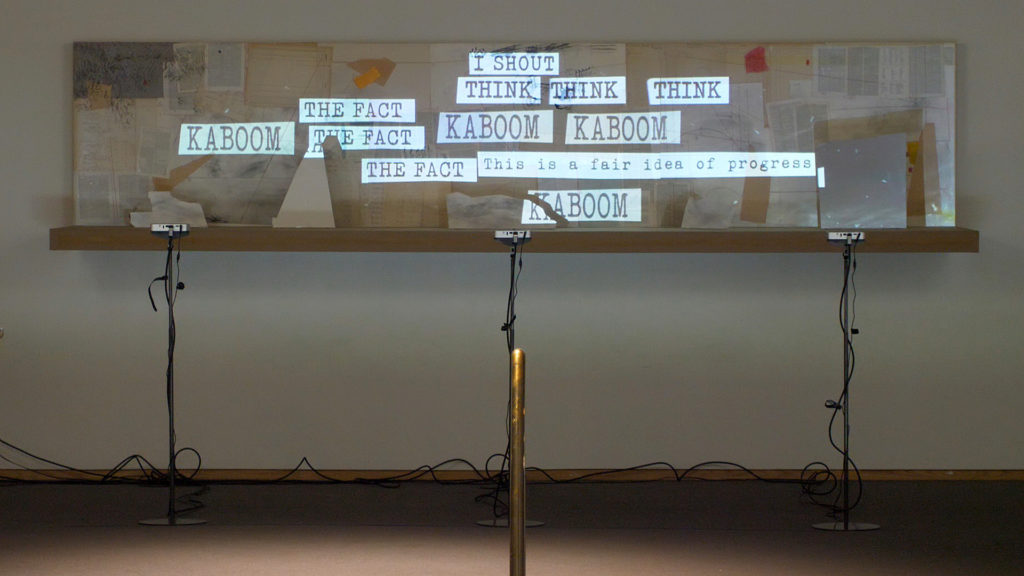KABOOM! (work of art)
Información sobre la obra de arte
Ideas clave sobre esta obra de arte
- KABOOM! is an example of Kentridge’s stop-motion animations, in which he draws a picture, takes a photo, changes it a tiny bit, and then takes another photo. By repeating this process and putting the pictures together, he creates a moving film.
- The work tells the story of African porters (people who carry loads) who were forced to work for Europeans during the First World War. It demonstrates how Europeans used colonial control in war and how war and colonialism are connected.
- Kentridge is a white South African artist who was raised to be against apartheid, which was the forced segregation of races in South Africa.
- Even though KABOOM! tells a story from the early 1900s, Kentridge’s artistic intent is for viewers to see it and make connections between colonialism, migration, war, and racial discrimination today.
Más información
As a white South African and the son of prominent anti-apartheid attorneys who were deeply engaged with the uneven realities of politics and race in that country, William Kentridge challenges us to consider what it means to be an “African artist” in the 21st century. He skillfully uses a diverse range of media, including theater, opera, film, sculpture, prints, and drawings. Many of his works incorporate and show his eraser marks, revisions, and layering process.
KABOOM! explores the story of the nearly two million African porters and carriers used by the British, French, and Germans during the First World War. This work includes a “sculptural diorama” that is placed on a shelf in front of the video. Cut-out shapes of human silhouettes and rock formations/landscapes are strategically interwoven into a layered, time-based presentation. The artist’s use of animation combined with the diorama are part of his signature style of using mixed media in a single work while also emphasizing the importance of looking closely and questioning what we are shown and what we are told.
This work of art speaks to the themes that repeatedly appear in Kentridge’s work, specifically relating to the construction and deconstruction of time, memory, geography, and history. As Kentridge himself notes, the process of recording history involves constructing from reconfigured fragments to arrive at a short-term understanding of the past.
Recursos adicionales
Recursos para los profesores:
- Watch a video to learn more about Kentridge.
- Read a short biography of the artist.
- Watch a video of the artist explaining his work.
- Read an analysis of KABOOM! in historical context.
Recursos para los estudiantes:
- Learn more about the history of South Africa.
- Read an article about colonialism.
- Watch a video about Kentridge’s artistic process.

